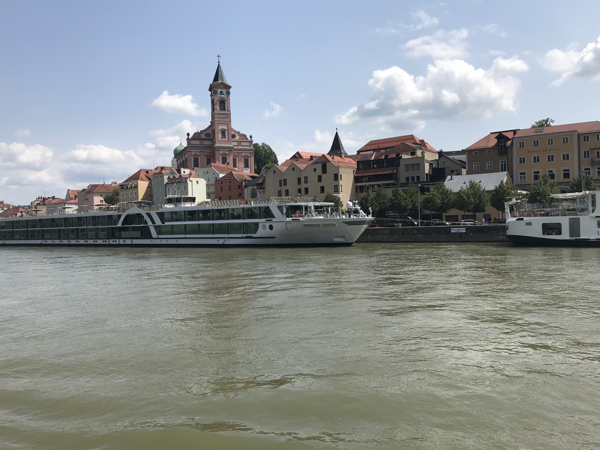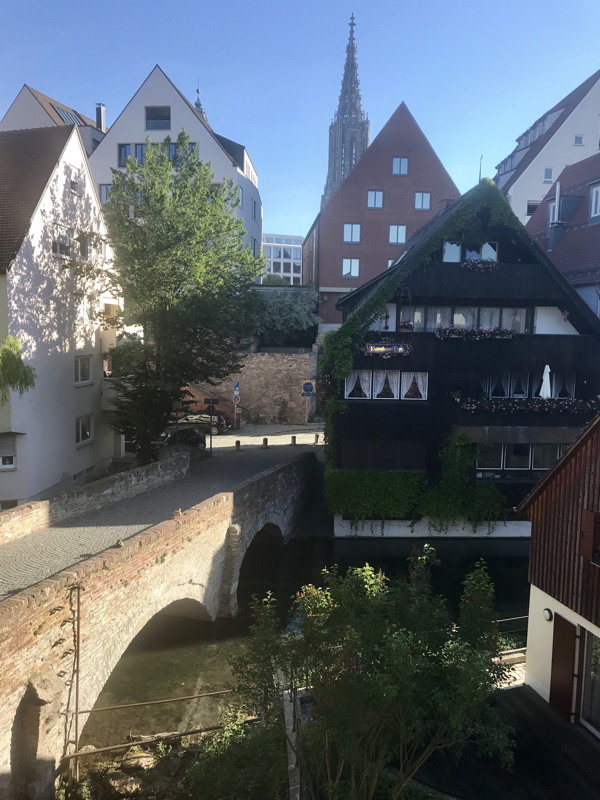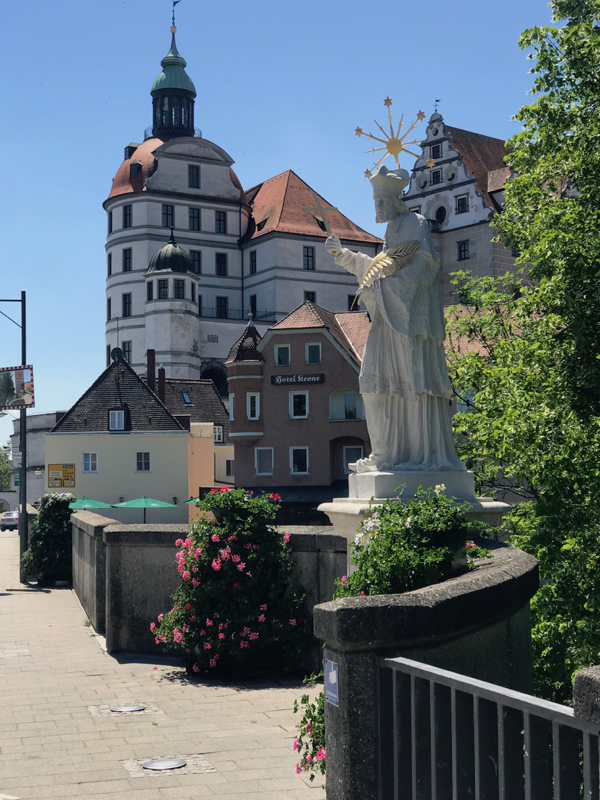Difficulty: Easy to Moderate
Bike Rating: Good to Excellent
Last cycled May, 2017 and 2019
© 2015-2019
By David May
Home PageThe Eurovelo 6 Route on the Danube across Germany: Ülm to Passau
Other Eurovelo 6 Pages:
The Eurovelo 6 bike route in France from the Atlantic Ocean to Burgundy (The Loire à Vélo
The Eurovelo 6 bike route from Burgundy through Switzerland to Ülm on the Danube in Germany
Austrian Danube Bike Routes: The Eurovèlo 6 from Passau, Germany to Vienna.
Ülm Rathaus (city hall).
Ülm is a wonderful city Cathedral spire in distance.
Distance:
275 kilometers (170 miles) in Germany (followed by 300 kilometers on the Danube Route in Austria). With variations, slightly longer or shorter.
Guidebooks:
For the German Danube, I highly recommend the Esterbauer guidebook Danube Bike Trail, Part 1, GermanDanube Donauschllingen to Passau. It would also be possible to use the Cicerone guidebook, The Danube Cycleway, Volume 1. I have not reviewed this book, but I have reviewed Volume 2, which covers the bike route beyond Budapest. In my opinion the Esterbauer guidebook is better because a) the maps show distances and the precise nature of the biking surfaces, which allows one to choose which alternative route serves better; and b) the pages are detachable, and sized to be mounted in the plastic atop many handlebar bike bags. This is very handy. Both books list many lodging possibilites, but if you are constructing your own itinerary it seems preferable to use sites such as Trip Advisor or Booking.com and/or and searches of hotel listings in individual towns.
From Ülm to Passau the bike route is often roughe and hard to follow. Additionally there are variations. The Danube now generally flows in the midst of an agricultural plain, and branch bicycle paths go off to nearby towns. If one misses a sign, it is easy to get lost (but if so, many people speak English and will be helpful). On my trip there were unexpected detours due to construction, one of which went on a track that climbed several hundred feet into a forest. On several occasions the signage was missing or obscure. The Esterbauer guidebook was on occasion very helpful, but, though only a year old, it was often incorrect. Esterbauer offers web updates, and I strongly suggest using this service just before your departure. I wish I did; much had changed in a couple of years.
Bicycle Issues:
Much of the Eurovelo 6 bike route is on gravely or stony tracks along the top of the dikes by the Danube or nex to them. Very wide tires will be an advantage, and lower tire pressures will give a gentler ride – not at the cost of speed on this type of terrrain. Important: the vibrations on the tracks can be brutal to a mediocre bicycle. My cycling partner's bike ( a well known American brand) had the handlebar screws work loose over several days of vibrations, and luckily the ensuing accident was at a very low speed. Additionally the lugs on theis bikes frame, into which the water bottle holder was screwed, partially detached; so that the water bottle carrier fell off, and it was impossible for me or a bike shop to refix the lugs. They were pried off and the holes left in the frame were taped over to prevent water entry. Bring a quality bike and check all screws for tightness every few days.
You will not, past Ülm be able to ride along the Danube dikes on a narrow-tired or fragile bike. However, it appears to be possible, with a good map, to create an alternative, sometimes hilly route on minor roads that parallels the river, where narrow tires are useable. I have not fully researched this. Once Passau is reached, a narrow-tired road bike will again be usable on the Eurovelo 6.
Restaurants, cafes and bike path snack bars:
In addition to German cuisine, there are a surprising number of Greek, Italian and Indian restaurants. Snack bars beetween cities, however, are very few. Carry lots of water, and carefully consider stopping at a cafes when you pass one.
Major Sights (from west to east):
The descent from the "continental divide (North Seas - Black Sea) to Tuttlingen
The Danube "stream" in the Swabian Alps east of Tuttlingen
The Sigmaringen Castle, home of the Hohenzollern Dynasty
Benedictine Abbey of Obermarchtal
Blautopf in Blaubeuren (very much worth the small detour)
ULM (my favorite German Danube City). Visit the Danube Promenade, the fisher and tanner quarter, the Town Hall (Rathaus), the Cathedral and its square, and several excellent museums.
Günzburg has a Legoland
The wetlands along the Danube dikes.
The city center of Donauworth, Ingolstadt and Vohburg
The Benedictine Abbey at Weltenburg
The Boat Trip through the Danube Gorge
Kelheim: View of the Hall of Liberation
The canal which allows large ships to enter the Danube from the Rhine
REGENSBURG, very attractive city center, many sights and shops
Deggendorf: and later Vilshofen: Possibility of taking a river boat to Passau on certain days. This takes about 4 hours, as the ship must pass through the lock before Passau.
PASSAU: A charming city just before Austria, where the Inn River joins the Danube. The Inn, which arises in the Alps, is sless long than the upper Danube, but provides a larger flow. In Passau there are several museums and many restaurants. Passau is the normal starting city for bike tours in Austria to Vienna.
Dilligen:
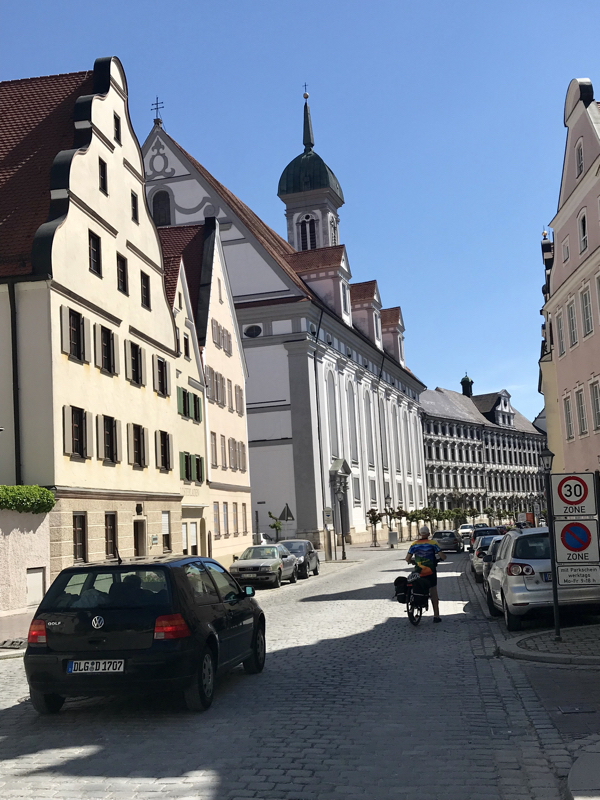 Hops near Staubling:
Hops near Staubling:

Bikes aboard a river boat for the passage through the Danube Narrows:

Ingolstadt:
Regensburg Catherdral
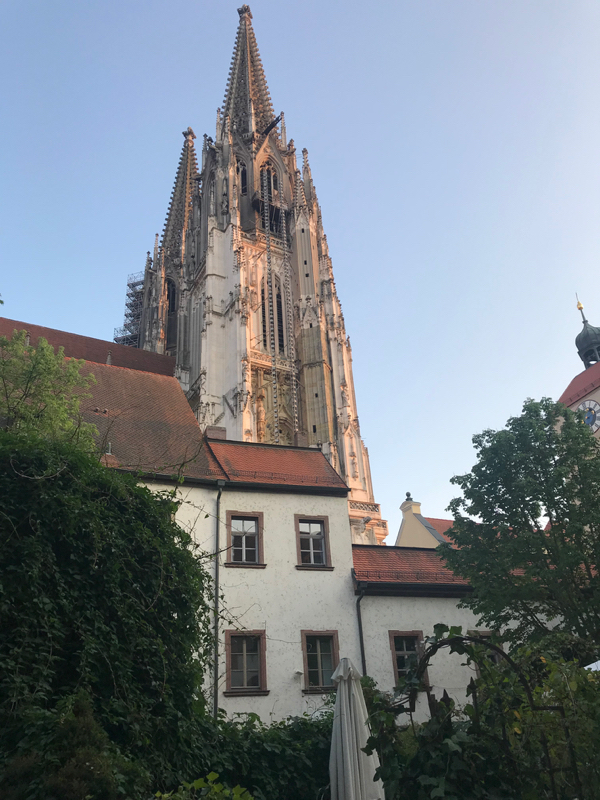
Regensburg Street
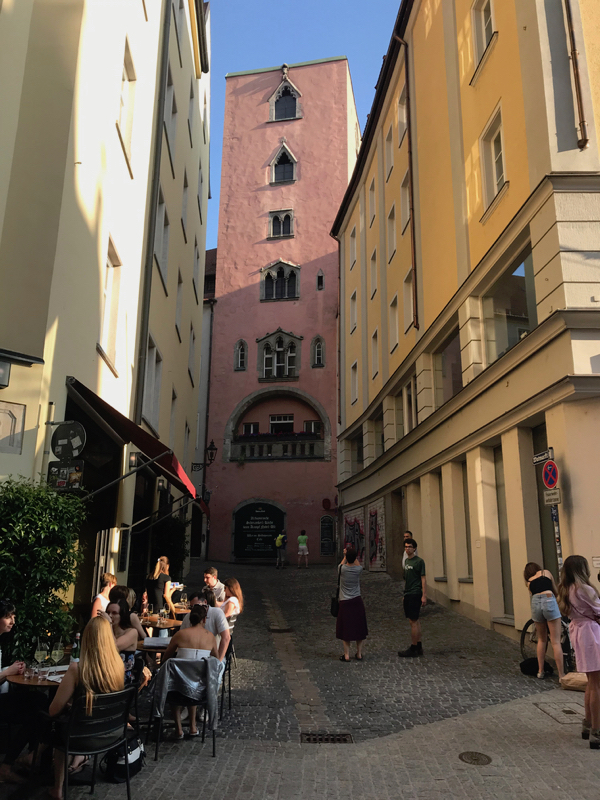
Obermarchal Abbey
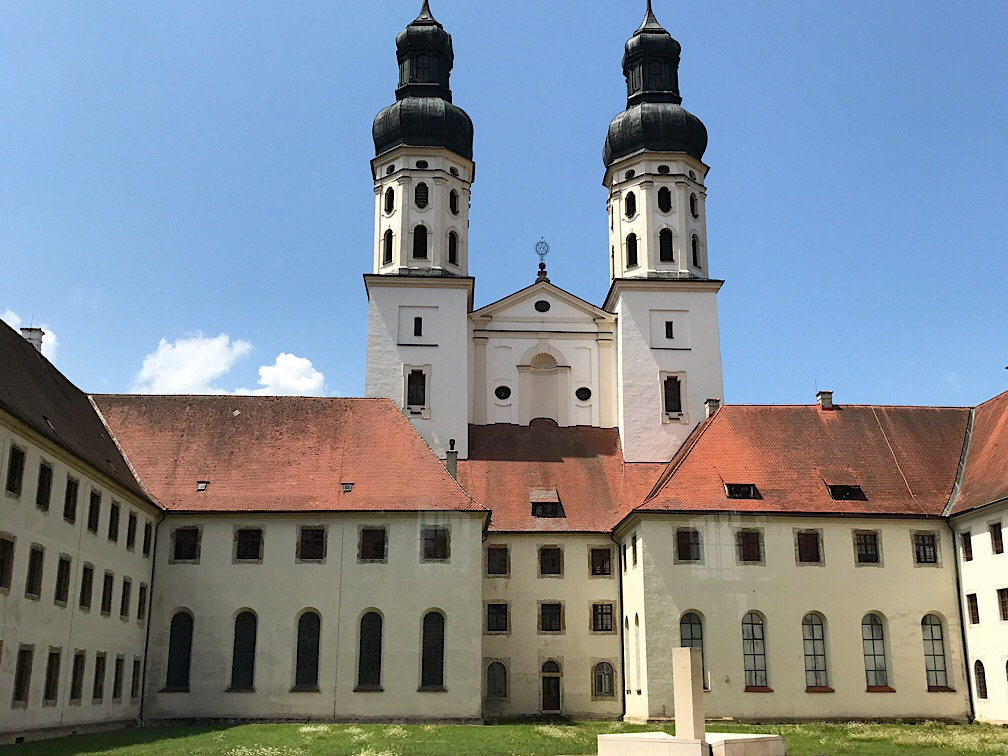
Distance (in kilometers) to the Black Sea
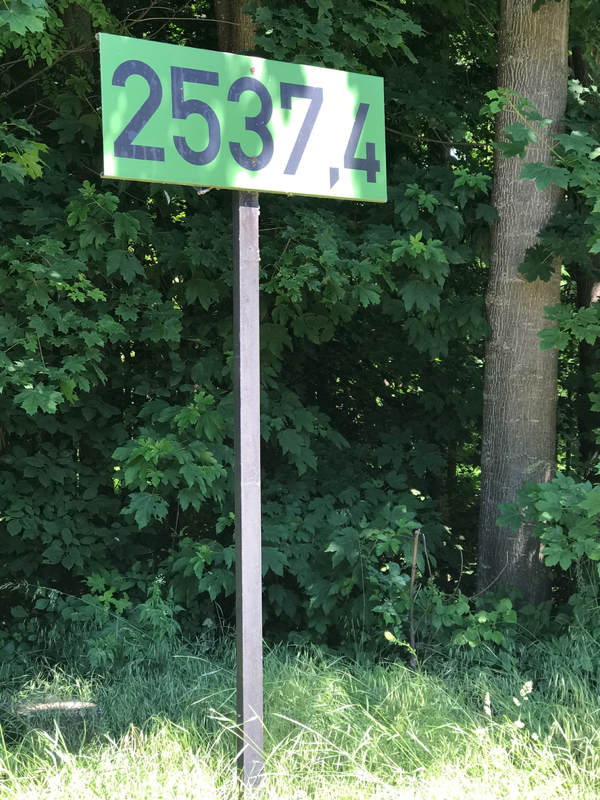
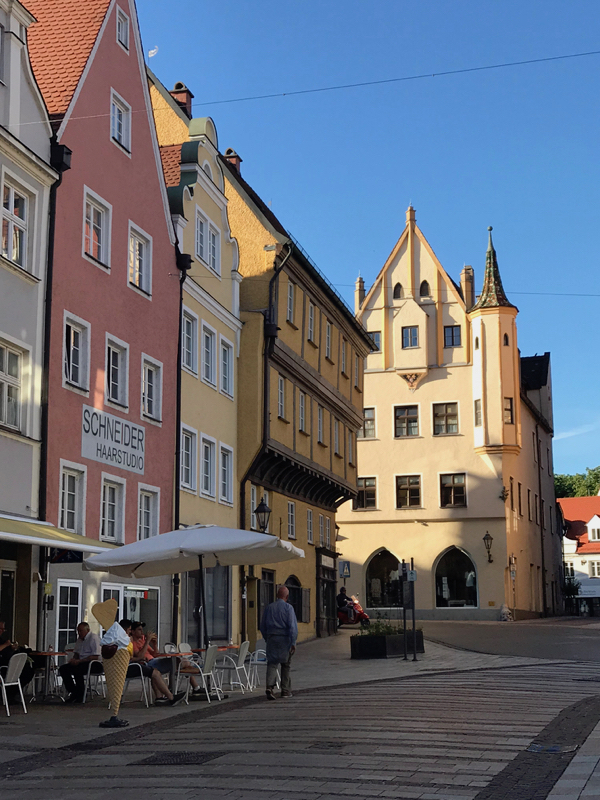
Cruse boat at Passau
